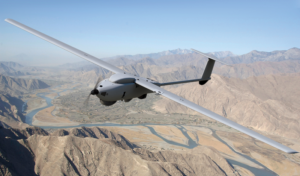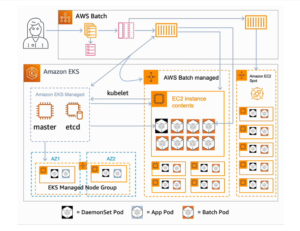
Kubernetes Goes Big and Small at KubeCon

(Image source: Pepperdata)
The Kubernetes community descended upon Detroit, Michigan, this week for the annual KubeCon conference, which is being held in conjunction with the CloudNativeCon. Some of the vendors making news at the show included AWS, which went big with a batch Kubernetes service for high volume workloads, and Red Hat, which went small with its new lightweight Kubernetes release for edge devices.
Kubernetes (also known as K8S) is flying high as the defacto standard for running container workloads. This is important for folks building and deploying big data, advanced analytics, and AI applications, as Kubernetes can reduce much of the muss and fuss involved with scaling these applications to the rare heights required.
But as Kubernetes’ popularity grows, customers increasingly want to use it to deploy standardized code packages running on the edge. This was the gist behind Red Hat’s new Device Edge, a lightweight Kubernetes runtime designed for small devices like robots, IoT gateways, and points of sale (POS) systems in retail outlets.
Red Hat claims its Device Edge offering enables users to deploy containers on computers that are half the size that one would traditionally expect for a traditional K8S deployment. That brings the potential for substantial savings on infrastructure, the company says.
Device Edge is based on MicroShift, which Red Hat dubs “an experimental flavor of OpenShift/Kubernetes optimized for the device edge.” MicroShift “targets the niche between minimal, standalone Linux edge devices and full-fledged OpenShift/Kubernetes edge clusters,” the company says.
The new offering could help the defense industry build smarter and smaller AI devices, according to Justin Taylor, vice president of AI at Lockheed Martin. “The ability for small military platforms to handle large AI workloads will increase their capacity in the field, ensuring our military can stay ahead of evolving threats,” Taylor says in a Red Hat press release.
On the other side of the K8S spectrum is the new batch workload scheduler for AWS’s cloud service. Dubbed AWS Batch for Amazon Elastic Kubernetes Service (Amazon EKS), the new offering is designed to simply the configuration and management of large-scale, compute-intensive batch workloads.
While K8S has often been used to help simplify the configuration and deployment of complex applications consisting many microservices, there are also use cases for K8S involving a smaller number of much bigger jobs, according to Steve Roberts, a senior developer advocate at AWS.
“When I’ve previously considered Kubernetes, it appeared to be focused on the management and hosting of microservice workloads,” Roberts wrote in a blog post today. “I was therefore surprised to discover that Kubernetes is also used by some customers to run large-scale, compute-intensive batch workloads.”
However, there’s a lot of work that goes into configuring and tuning a K8S cluster for running a large batch workload, Roberts writes. That’s what gave rise to the release of AWS Batch for Amazon EKS.
The new offering is a managed service to run large batch workloads on Amazon EC2 clusters, Roberts writes. “AWS Batch provides a scheduler that controls and runs high-volume batch jobs, together with an orchestration component that evaluates when, where, and how to place jobs submitted to a queue,” he writes. “There’s no need for you, as the user, to coordinate any of this work—you just submit a job request into the queue.”
AWS Batch handles all the gory details involved with running a large-scale K8S cluster, including job queuing, dependency tracking, retries, prioritization, pos submission, and compute resource provisioning for EC2 and EC2 Spot instances.
“As a managed service, AWS Batch for Amazon EKS enables you to reduce your operational and management overhead and focus instead on your business requirements,” Roberts writes.
Related Items:
Kubernetes Adoption Widespread for Big Data, But Monitoring and Tuning Are Issues, Survey Finds
AIOps and the Kubernetes Revolution

































